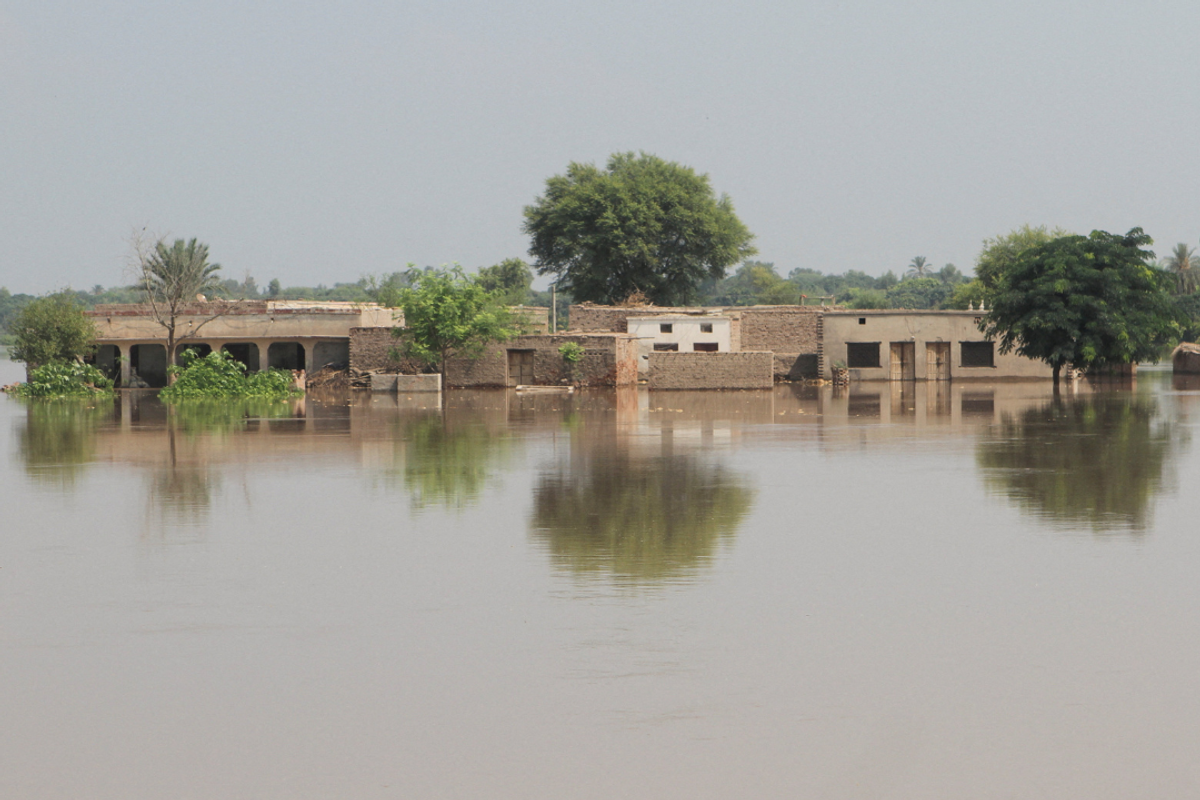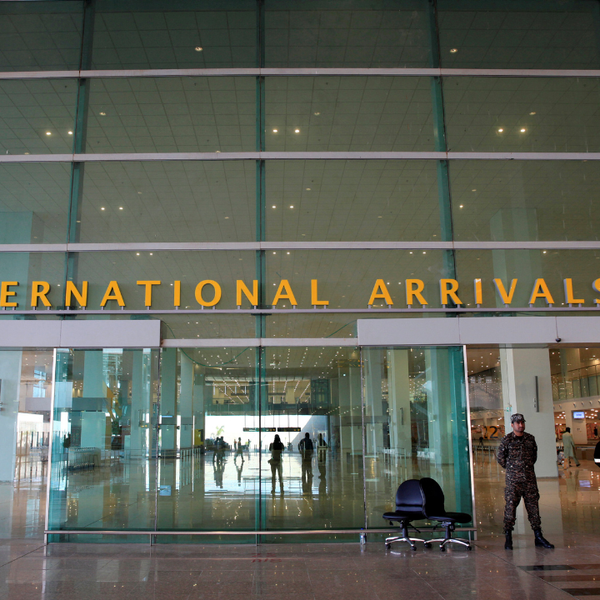Floods inflict PKR 409B in damages, slash Pakistan’s growth outlook
Agriculture bears PKR 302billion losses as Punjab crops submerged
Business Desk
The Business Desk tracks economic trends, market movements, and business developments, offering analysis of both local and global financial news.

Houses are partially submerged following monsoon rains and rising water levels of the Chenab River, in Muzaffargarh, Punjab province, Pakistan
Reuters
The devastating floods this year have inflicted an initial economic toll of approximately PKR 409 billion (USD 1.4 billion), or 0.33% of Pakistan’s GDP, with the agriculture sector absorbing the brunt of the damage, according to a report released by Arif Habib Ltd. (AHL), one of Pakistan’s biggest brokerages.
“Agriculture has taken the heaviest blow, with losses exceeding PKR 302 billion (USD 1.0 billion), accounting for nearly three-fourths of total damages,” the report stated. “This reflects the sector’s acute vulnerability to climate shocks and underscores the risks these events pose to food security and rural livelihoods.”
The floods have ravaged millions of acres of farmland, disrupting crop production and threatening the fragile economic recovery Pakistan had begun to stage following previous years of economic contraction.
Transport and communication infrastructure has also suffered significantly, with damages valued at PKR 97.6 billion (USD 333 million), or 0.08% of GDP. “Beyond the direct financial cost, the destruction of roads, bridges, and communication networks disrupts connectivity, delays relief efforts, and slows the movement of goods,” AHL noted, highlighting the broader economic strain.
Housing-related losses were reported at PKR 8.95 billion (USD 31 million), while livestock losses totaled PKR 0.5 billion (USD 2 million). Although relatively modest in monetary terms, these damages carry “substantial social consequences”, the report said, particularly for rural households that rely heavily on livestock as an economic buffer.
Growth outlook revised downward
Pakistan’s economic recovery, previously showing signs of improvement, is now facing new headwinds. Real GDP, which had contracted by 0.2% in FY23 and rebounded by 2.5% in FY24, is expected to slow in FY25 due to the flood’s impact on agriculture.
“Pre-flood projections for FY26 had placed growth at 3.4%, but this has now been revised down to 3.2%, with the agriculture growth forecast slashed from 2.2% to just 1.1%,” AHL said.
According to the report, the worst-hit province is Punjab, where about 1.3 million acres (526,000 hectares) of key crops such as rice, sugarcane, cotton, and maize have been submerged, particularly in districts along the Ravi, Chenab, and Sutlej rivers.
In Sindh, reports suggest up to 80% of Bahawalnagar’s cotton crop has been destroyed.
Khyber Pakhtunkhwa has seen smaller but still significant losses, with 3,200 acres (1,300 hectares) affected in districts including Buner, Battagram, and Swat.
Major crop losses
Using a base-case assumption of a 10% loss across key crops, AHL estimates combined crop and livestock losses at PKR 303 billion (USD 1.03 billion), or 0.24% of GDP. Sugarcane is projected to suffer the most damage, with losses of PKR 88.4 billion (USD 302 million), followed by rice at PKR 81.4 billion (USD 278 million), and cotton at PKR 77.4 billion (USD 264 million).
“These three crops account for nearly three-fourths of the total damage, threatening both farm incomes and downstream industries such as textiles and sugar processing,” the report warned.
Maize losses were also notable, totaling PKR 55.1 billion (USD 188 million). While livestock losses are small in aggregate terms, AHL emphasized their disproportionate impact at the household level. “Animals often serve as a critical buffer asset for small farmers,” it said.
The National Disaster Management Authority (NDMA) reported the loss of more than 6,000 livestock in the recent flooding, a stark contrast to the 1.3 million animals lost during the catastrophic 2010 floods. Still, the destruction may intensify food insecurity by reducing the availability of meat and dairy.
Outlook remains uncertain
Despite some encouraging early signs, such as a 9% year-on-year increase in cotton arrivals reported by the Pakistan Cotton Ginners’ Association, AHL warned that the final economic toll may rise further.
“While the headline figure of 0.33% of GDP may appear modest from a macroeconomic perspective, this is only an initial assessment,” the report stated. “As both direct and indirect repercussions become clearer in the days ahead, the final damage estimate is likely to be higher.”
The latest disaster has again spotlighted Pakistan’s vulnerability to climate change, particularly in the agriculture sector, which employs a large portion of the population and remains a critical driver of GDP.







Comments
See what people are discussing